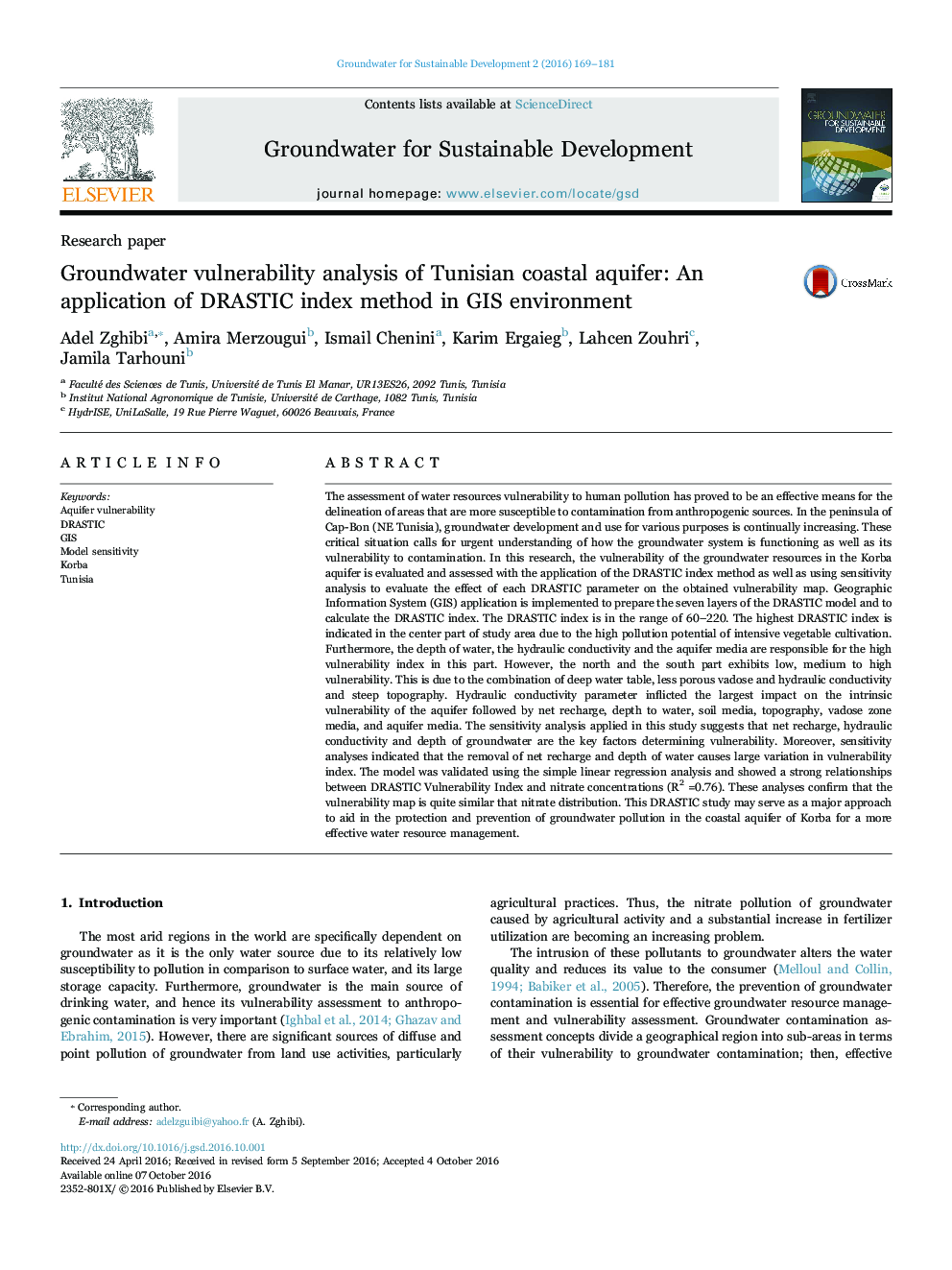| کد مقاله | کد نشریه | سال انتشار | مقاله انگلیسی | نسخه تمام متن |
|---|---|---|---|---|
| 6481983 | 1622679 | 2016 | 13 صفحه PDF | دانلود رایگان |

- Korba aquifer is vulnerable to contamination by anthropological activities.
- The Korba aquifer is highly polluted in terms of nitrate content.
- DRASTIC index explored as a tool of protecting groundwater resources.
- DRASTIC model was evaluated using simple linear regression analysis.
- DRASTIC index method was used and validated with nitrate content.
The assessment of water resources vulnerability to human pollution has proved to be an effective means for the delineation of areas that are more susceptible to contamination from anthropogenic sources. In the peninsula of Cap-Bon (NE Tunisia), groundwater development and use for various purposes is continually increasing. These critical situation calls for urgent understanding of how the groundwater system is functioning as well as its vulnerability to contamination. In this research, the vulnerability of the groundwater resources in the Korba aquifer is evaluated and assessed with the application of the DRASTIC index method as well as using sensitivity analysis to evaluate the effect of each DRASTIC parameter on the obtained vulnerability map. Geographic Information System (GIS) application is implemented to prepare the seven layers of the DRASTIC model and to calculate the DRASTIC index. The DRASTIC index is in the range of 60-220. The highest DRASTIC index is indicated in the center part of study area due to the high pollution potential of intensive vegetable cultivation. Furthermore, the depth of water, the hydraulic conductivity and the aquifer media are responsible for the high vulnerability index in this part. However, the north and the south part exhibits low, medium to high vulnerability. This is due to the combination of deep water table, less porous vadose and hydraulic conductivity and steep topography. Hydraulic conductivity parameter inflicted the largest impact on the intrinsic vulnerability of the aquifer followed by net recharge, depth to water, soil media, topography, vadose zone media, and aquifer media. The sensitivity analysis applied in this study suggests that net recharge, hydraulic conductivity and depth of groundwater are the key factors determining vulnerability. Moreover, sensitivity analyses indicated that the removal of net recharge and depth of water causes large variation in vulnerability index. The model was validated using the simple linear regression analysis and showed a strong relationships between DRASTIC Vulnerability Index and nitrate concentrations (R2 =0.76). These analyses confirm that the vulnerability map is quite similar that nitrate distribution. This DRASTIC study may serve as a major approach to aid in the protection and prevention of groundwater pollution in the coastal aquifer of Korba for a more effective water resource management.
Journal: Groundwater for Sustainable Development - Volumes 2â3, AugustâSeptember 2016, Pages 169-181